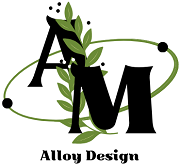Contents
Introduction to Powder based Additive Manufacturing
This introduces key metal 3D printing technologies including Laser Powder Bed Fusion, Laser Metal Deposition, Electron Beam Melting, and Binder Jetting. It also covers essential processing parameters that influence material performance, offering foundational knowledge for designing and producing advanced alloy components.
Powder Production Methods
Introduces key metal powder production techniques like atomization, chemical, and mechanical methods, highlighting how powder properties affect additive manufacturing performance.
Alloy design for Additive Manufacturing
Explores strategies for designing alloys tailored for additive manufacturing, including optimization techniques, CALPHAD-based modeling, and combinatorial methods. It emphasizes the integration of computational tools and material science to accelerate alloy development for AM applications.
Explore
Additive manufacturing challenges and applications
This chapter discusses key challenges in metal additive manufacturing, such as process-induced defects and printability issues. It also highlights current real-world applications of AM alloys, showcasing the technology’s potential across industries despite its technical hurdles.
Processing-microstructure-property relationships
This chapter introduces how processing affects microstructure and, in turn, material properties. It highlights key microstructural features, restoration mechanisms, and modeling approaches used to predict and optimize material behavior.
Additive Manufacturing of Steels
This focuses on additive manufacturing of advanced steels, detailing the processing, microstructural evolution, and performance of austenitic, maraging, precipitation hardening, tool, and duplex stainless steels. Key AM-specific challenges, heat treatment responses, and property optimization strategies are discussed.
Additive manufacturing of high-entropy alloys
This explores additive manufacturing of high-entropy alloys (HEAs), with a focus on the Cantor alloy and its variations, including Al-modified and other derivative systems. It also covers refractory HEAs, highlighting processing challenges, microstructural control, and performance optimization in AM.
Additive manufacturing of Aluminium alloys
This chapter covers additive manufacturing of aluminum alloys, emphasizing processability, microstructure, and mechanical performance. Key alloys discussed include AlSi10Mg, AlSi12, Scalmalloy, AlSi7Mg (A357), and AA6061, with a focus on their behavior during AM, heat treatment response, and application-specific advantages.
Additive manufacturing of nickel superalloys
This chapter addresses additive manufacturing of nickel-based superalloys, focusing on alloys like IN718, IN625, and Hastelloy X. It discusses their printability, microstructural evolution, and post-processing requirements. Challenges with non-weldable superalloys and strategies for designing new AM-compatible nickel alloys are also covered.
Additive manufacturing of titanium alloys
This chapter focuses on additive manufacturing of titanium alloys, highlighting Ti-6Al-4V, commercially pure titanium, and β titanium alloys. It covers processing behavior, microstructural control, and mechanical performance, with emphasis on application-driven property optimization.
Sustainability in Additive Manufacturing
This chapter explores sustainability in additive manufacturing, addressing its environmental footprint and methods to assess and minimize it. Topics include life cycle assessment (LCA) database development, impact prediction tools, strategies for reducing emissions and waste, and the social implications of AM. It also covers life cycle costing, eco-design principles, and the role of sustainable materials science in guiding responsible AM practices.
